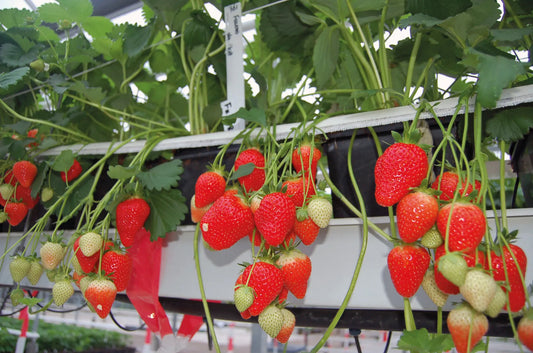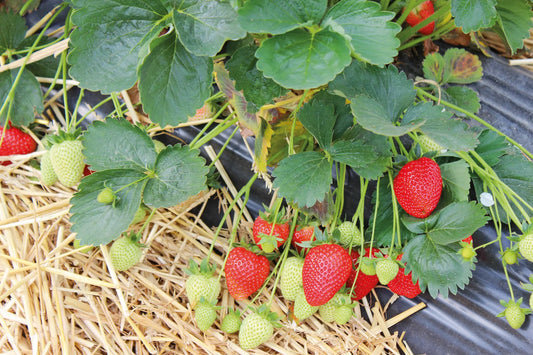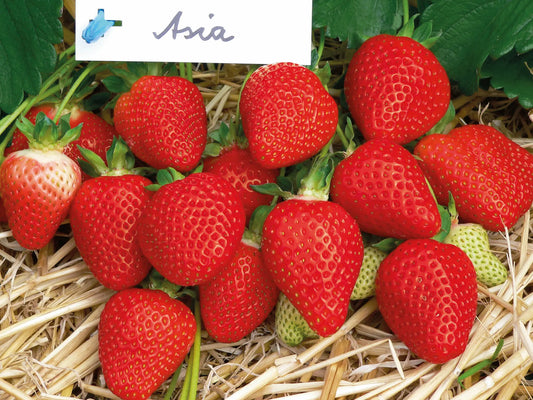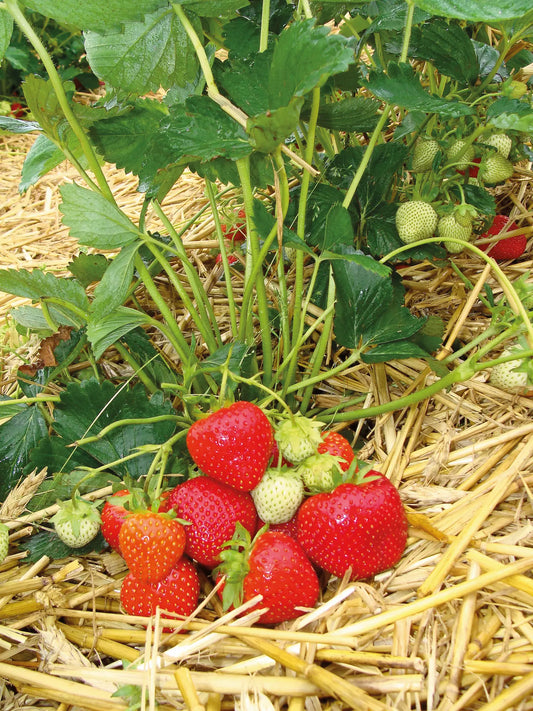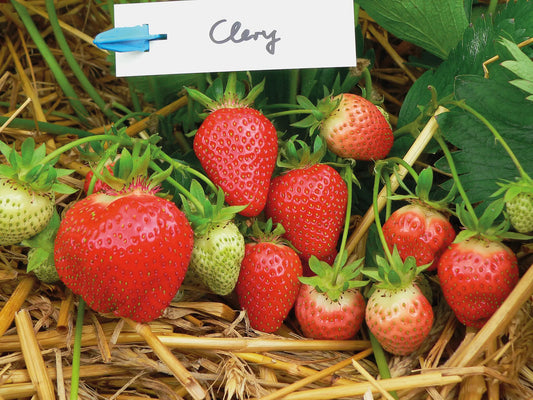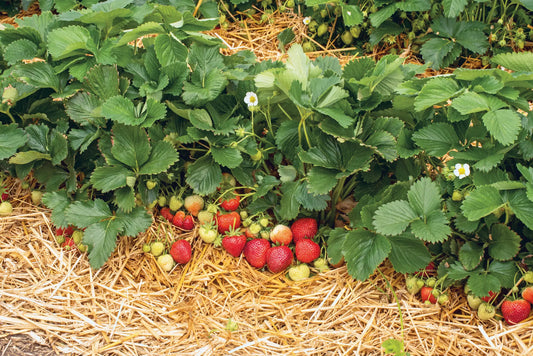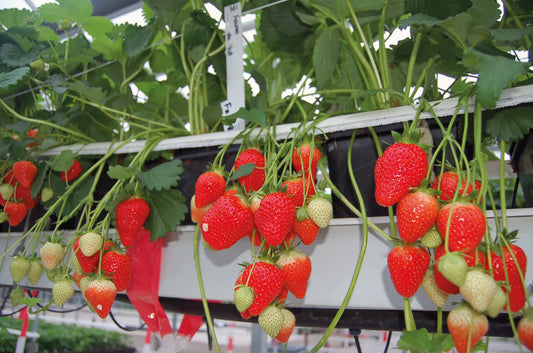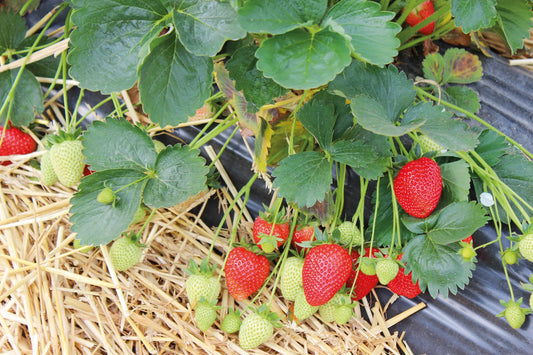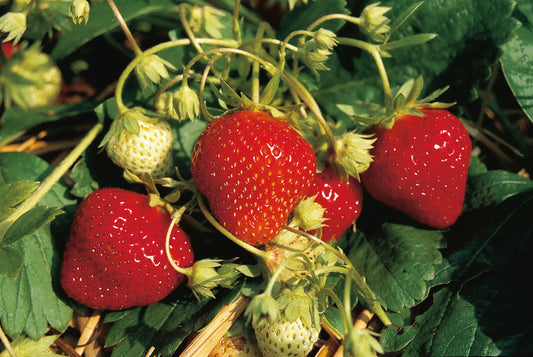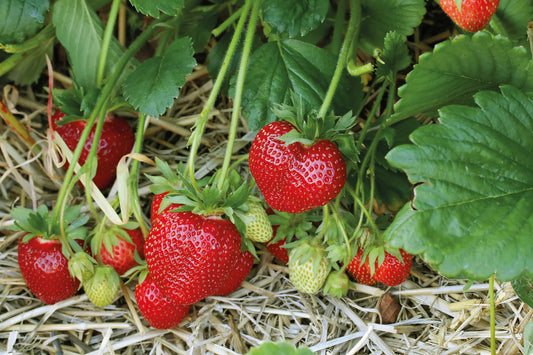-
Delivery from 10 plants to France, Switzerland and Europe
Delivery method -
Strawberry Plant Wholesale Supplier
About Us -
Quality Strawberry Plants
Strawberry technical itinerary -
Secure payment
Our Payment Terms
Technical Guide for Growing Strawberries from Tray or Mini-Tray Strawberry Plants
Plant Tray and Plant Mini-Tray: Definitions and Characteristics
Tray and Mini-Tray plants are types of strawberry plants used for intensive commercial production. They allow for fast and efficient strawberry production, while reducing transplanting stress thanks to their rooted plugs. These types of plants are prized for their ability to guarantee high yields from the first year of cultivation.

Production Calendar - Strawberry Plant Tray

Plant Tray
Tray plant production begins in a similar way to fresh potted plants . Plants are harvested as unrooted cuttings between early and mid-July and then potted. For the first few days after potting, the plants are watered regularly until their roots are sufficiently developed.
Unlike fresh potted plants, which are delivered as soon as rooting is complete, Tray plants remain in their trays until the winter dormancy period. During this phase, they flower in September-October, similar to the Waiting-Bed method. After entering dormancy, the plants are stored in a cold room at -2°C.
This approach allows Tray plants to have a high harvest potential , comparable to that of Waiting-Bed, and to be suitable for 60-day cultivation in a greenhouse. Thanks to their rooted plugs, Tray plants experience less heat stress and are more resistant to high temperatures, which promotes growth and improves fruit size.
Characteristics of Tray plants:
- Rooted Ball: The root ball makes transplanting easier and reduces rooting stress.
- Heat Stress Resistance: Tray plants are more resistant to high temperatures compared to other types of plants.
- Yield Potential: They offer a yield comparable to that of the Waiting-Bed, making them suitable for 60-day greenhouse crops.
- Fast Planting: Tray plants are easy to plant in series in a substrate, speeding up the growing process.
- Cost: Their production and storage in negative cold make Tray plants more expensive than other types of plants.
Plant Mini-Tray
The Mini-Tray plant is similar to the Tray plant, but has a smaller root volume, approximately half that of the classic Tray. Although the Mini-Tray has a smaller root volume, it retains the advantages of a root ball that promotes rapid recovery after transplanting.
Features of Mini-Tray plants:
- Rooted Ball: Similar to the Tray Plant, but smaller in size.
- Recovery speed: The smaller root volume may slightly slow down the recovery of Mini-Trays compared to classic Trays.
Differences between Tray and Mini-Tray plants
The main difference between the two types of plants lies in the size of the root ball. Mini-Trays have a smaller root volume, which can slightly affect their recovery and development speed compared to Trays. However, both types of plants guarantee a high yield from the first year of cultivation.
Technical itinerary for growing strawberries from Tray and Mini-Tray plants
Reception and storage of plants
Upon receipt of Tray or Mini-Tray plants, it is crucial to ensure that the roots do not dry out. If you cannot plant them immediately, store them in a cool, ventilated place at a temperature of 2°C to 4°C, away from wind and direct light. This storage ensures root viability until planting.
Soil preparation
Fertile, well-drained soil is essential for growing Tray and Mini-Tray strawberries. The ideal soil pH is between 5.5 and 6.5 to promote good root development.
- Amendment: Work the soil deeply (20 to 30 cm) and incorporate well-rotted compost or an organic fertilizer rich in organic matter.
- Weeding: Before planting, remove all weeds to prevent them from competing with the strawberry plants for nutrients and water.
Planting
The planting period for Tray plants is from December to June, while Mini-Tray plants can be planted from December to July.
- Spacing: Space plants 25 to 30 cm apart in the row and leave a gap of 60 to 70 cm between rows.
- Depth: Plant the strawberries so that the root collar is at ground level to avoid the risk of rot or drying out.
Watering
Initial watering
Water the plants thoroughly after planting to thoroughly moisten the soil around the roots. This step helps the plants recover quickly.
Regular irrigation
Maintain consistent moisture levels during the root development period. Drip irrigation is recommended for controlled watering to avoid excess water that could cause fungal diseases.
Routine maintenance
Mulching
Use plastic or organic mulch to retain soil moisture, reduce weed competition, and protect fruit from direct contact with the soil.
Weeding
Regular weeding is necessary to maintain plant health. Be careful when tilling the soil to avoid damaging the surface roots of the strawberry plants.
Fertilization
Apply balanced fertilizer in spring to support vegetative growth and fruiting. Nutrient inputs should be adjusted based on soil test results.
Culture management
Carefully monitor your plants' water and nutrient needs throughout their development. Careful management of irrigation and fertilization is crucial to ensure optimal growth.
Plant protection is also essential. Regularly monitor for diseases such as botrytis and powdery mildew, as well as pests such as aphids and mites. Good preventive and curative management is essential to avoid yield losses.
Harvest
Strawberries grown from Tray and Mini-Tray plants reach maturity approximately 60 to 70 days after planting. Harvest strawberries when they are fully red and fully ripe, preferably early in the morning to maintain freshness.
Harvesting in several passes is recommended to ensure better quality fruit. After picking, handle strawberries carefully and store them in a cool environment to extend their shelf life.
Advantages of Tray and Mini-Tray plants
- High yield potential: Tray and Mini-Tray plants provide high yields from the year of planting.
- Precise programming: These plants allow you to program production dates and volumes very precisely.
- Adaptability: They are suitable for both open ground and soilless cultivation.
- Stress reduction: Thanks to their root ball, these plants recover quickly and tolerate high temperatures better.
Conclusion
Growing strawberries from Tray and Mini-Tray plants is a successful method that offers early production and high yields from the first year. However, it requires careful technical management and an investment in equipment to be profitable. Despite the higher initial cost, the benefits in terms of yield, flexibility, and fruit quality more than compensate for this investment for strawberry growers.
Fraisiverse - Your supplier of quality strawberry plants. Organic or conventional. Delivery throughout France. Wide range of strawberry plants: Tray Strawberry Plants, Motte Strawberry Plants, Frigo Strawberry Plants, Waiting Bed Strawberry Plants. Strawberry plants for professional and private strawberry growers
Our Mini-Tray Strawberry Plants
-
Ciflorette Mini-Tray Strawberry Plant
Regular price €0,52 EURRegular priceUnit price / per -
Charlotte Mini-Tray Strawberry Plant
Regular price €0,55 EURRegular priceUnit price / per -
Favori Mini-Tray Strawberry Plant
Regular price €0,63 EURRegular priceUnit price / per -
Florentina Mini-Tray Strawberry Plant
Regular price €0,63 EURRegular priceUnit price / per -
Hademar Mini-Tray Strawberry Plant
Regular price €0,63 EURRegular priceUnit price / per
Our Strawberry Plants Tray
-
Gariguette Tray Strawberry Plant
Regular price €0,58 EURRegular priceUnit price / per -
Ciflorette Tray Strawberry Plant
Regular price €0,60 EURRegular priceUnit price / per -
Asia Tray Strawberry Plant
Regular price €0,64 EURRegular priceUnit price / per -
Rumba Tray Strawberry Plant
Regular price €0,64 EURRegular priceUnit price / per -
Sonata Tray Strawberry Plant
Regular price €0,64 EURRegular priceUnit price / per -
Charlotte Tray Strawberry Plant
Regular price €0,64 EURRegular priceUnit price / per -
Allegro Tray Strawberry Plant
Regular price €0,65 EURRegular priceUnit price / per -
Falco Tray Strawberry Plant
Regular price €0,65 EURRegular priceUnit price / per -
Flair Tray Strawberry Plant
Regular price €0,65 EURRegular priceUnit price / per -
Malling Centenary Tray Strawberry Plant
Regular price €0,65 EURRegular priceUnit price / per -
Sonsation Tray Strawberry Plant
Regular price €0,65 EURRegular priceUnit price / per -
Gariguette Tray Strawberry Plant
Regular price €0,65 EURRegular priceUnit price / per -
Ciflorette Tray Strawberry Plant
Regular price €0,65 EURRegular priceUnit price / per -
Clery Tray Strawberry Plant
Regular price €0,65 EURRegular priceUnit price / per -
Dahli Tray Strawberry Plant
Regular price €0,66 EURRegular priceUnit price / per -
Glorielle Tray Strawberry Plant
Regular price €0,66 EURRegular priceUnit price / per -
Rendezvous Tray Strawberry Plant
Regular price €0,66 EURRegular priceUnit price / per -
Favori Tray Strawberry Plant
Regular price €0,69 EURRegular priceUnit price / per -
Florentina Tray Strawberry Plant
Regular price €0,69 EURRegular priceUnit price / per -
Hademar Tray Strawberry Plant
Regular price €0,69 EURRegular priceUnit price / per -
Cirafine Tray Strawberry Plant
Regular price €0,75 EURRegular priceUnit price / per -
Mara des Bois Tray Strawberry Plant
Regular price €0,75 EURRegular priceUnit price / per -
Magnum Tray Strawberry Plant
Regular price €0,76 EURRegular priceUnit price / per -
Mariguette Tray Strawberry Plant
Regular price €0,77 EURRegular priceUnit price / per



